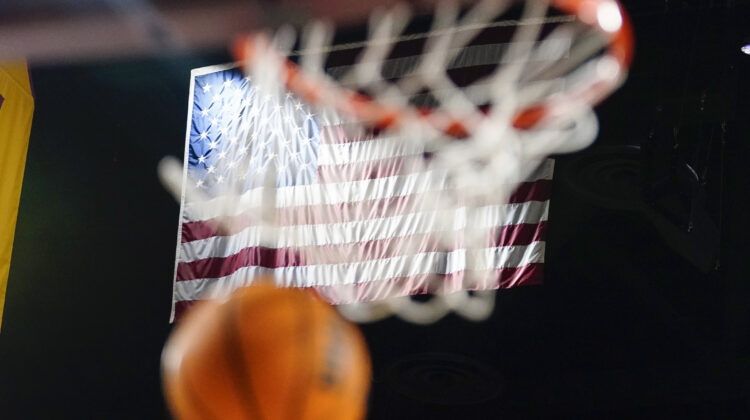Before the ‘Pac-4’ schools begin their home renovation — if, in fact, they choose that option — the quartet must establish a budget. How much cash would Cal, Stanford, Oregon State and Washington State have available to offset expenses and attract expansion candidates?
The details are unknown. Less than two weeks after the collapse of the conference, the financial officers and general counsels are plowing through budgets, bank accounts and bylaws.
Which schools have voting rights and thus control the assets?
How significant are the liabilities?
What resources are available for the rebuild?
One revenue stream is clear: The remaining schools would own the NCAA Tournament units earned by the outgoing members.
“Those shares stay with the conference,” Oregon State athletic director Scott Barnes said recently. “It’s one of the many valuable assets we have.”
Each game played by a conference in March Madness equals one unit. Those units translate to dollars and are paid out over a rolling six-year cycle through the NCAA Basketball Fund.
For now, let’s assume the NCAA distributions to the Pac-12 in the spring of 2024 will be split 12 ways, with the outgoing schools receiving equal shares. (Clarity on financial and administrative issues should come in the next few weeks.)
But the units earned won’t follow them out the door. All that cash will be left to the four remaining members, if they stick together. (At this point, it’s unclear what would happen to the units if the conference disbands.)
How much cash? Our focus here is the NCAA Tournament distribution in 2025, when the ‘Pac-4’ would be in greatest need of cash.
The units are paid out on a one-year delay, so the total amount received in 2025 will depend on the units earned over the previous six years — the NCAA Tournaments played in 2019-2024.
The Pac-12 earned just seven units in 2019 but generated a whopping 19 units in 2021, then seven in both the 2022 and 2023 events. (COVID forced the cancellation of the 2020 event, so there were no units available.)
Obviously, we cannot know the unit total earned by the Pac-12 in 2024 until the upcoming spring, so let’s estimate. We’ll average the units from the other years in the six-year payout cycle and assign that figure to 2024.
Which gives us the following units to be paid out to the four remaining members in the spring of 2025:
2019: 7
2020: N/A
2021: 19
2022: 7
2023: 7
2024: 10
Total: 50
The dollar value of each unit increases over time by approximately 3 percent annually. Let’s estimate $350,000 per unit, based on the value assigned in 2023.
Those 50 units would result in $17.5 million distributed to the Pac-12 in the 2025 payout cycle.
Were that amount split 12 ways, it would equal $1.46 million per school.
But only the remaining schools would be entitled to the distribution. Split four ways, it’s $4.38 million per school — a difference of about $3 million per campus.
The schools could keep that extra cash for themselves, to offset the loss of media rights revenue, or use it for the rebuilding project.
After all, $12 million might come in handy if an expansion candidate needs help covering the cost of an exit fee from its conference.
(In theory, the newcomers could receive a share of the NCAA revenue generated before they joined the conference, but that would be part of the expansion negotiations.)
Any schools leaving the Mountain West, for example, would owe $34 million in order to join the Pac-12 in time for the 2024 football season and $17 million to join for the 2025 season.
And don’t forget: The payout cycle encompasses six years on a rolling basis.
The Pac-12’s remaining schools will have access to units earned by UCLA, Arizona and the other departing programs until 2030.
Based on the units generated by the 12 schools to date — and using our estimated total for 2024 — the conference will receive $65.6 million from the NCAA over the payout period.
Again, we offer the splits:
— With no changes to membership, that would mean $5.5 million per school.
— But if paid only to Cal, Stanford, Oregon State and Washington State, that’s $16.4 million — a difference of $11 million per campus.
If that excess cash were pooled, then used to fund expansion or offset lost media rights revenue, the Pac-12 would have $44 million available to support the renovation.
*** Send suggestions, comments and tips (confidentiality guaranteed) to pac12hotline@bayareanewsgroup.com or call 408-920-5716
*** Follow me on Twitter: @WilnerHotline
*** Pac-12 Hotline is not endorsed or sponsored by the Pac-12 Conference, and the views expressed herein do not necessarily reflect the views of the Conference.
Related posts:

(AP Photo/Ralph Freso, File)
Brandon Huffman – Pac-12 Football Recruiting Notebook Hotline mailbag: WSU and OSU on the brink, UCLA’s compliance with AB-1887, why Oregon got left behind and loads more
Hotline mailbag: WSU and OSU on the brink, UCLA’s compliance with AB-1887, why Oregon got left behind and loads more  VIDEO – Jon Wilner and Brad on Pac-12 next steps
VIDEO – Jon Wilner and Brad on Pac-12 next steps  Kliavkoff says Big 12 “scared,” UCLA in tough spot with Big Ten move, Pac-12 exploring expansion and big tech interested in media rights
Kliavkoff says Big 12 “scared,” UCLA in tough spot with Big Ten move, Pac-12 exploring expansion and big tech interested in media rights
